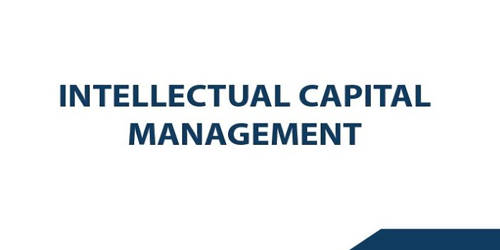Intellectual capital is the knowledge that can be exploited for some money-making or other useful purpose. It is the sum of all knowledge; implying that knowledge that exists at different levels both within or outside the organization has to be taken into account for intellectual capital. It includes customer capital, human capital, intellectual property, and structural capital. It is the sum of employee expertise, organizational processes, and other intangibles that contribute to a company’s bottom line. Intellectual Capital Management links scientific and technology R&D, innovation and intellectual property rights in a holistic management concept.
Currently, intellectual capital in its various forms is the most important resource for all types of companies. The intangible nature of many knowledge products and processes, in combination with the increasing importance of their value in corporate balance sheets, leads to a growing interest in the management of intellectual capital. In the current economy, more and more managers combat the financial crisis, trying to find all kinds of solutions to increase company value and intellectual capital management is of major importance, even vital for certain companies. It is a business asset, although measuring it is a very subjective task. Creating, shaping and updating the stock of intellectual capital requires the formulation of a strategic vision, which blends together all three dimensions of intellectual capital (Human, Structural and Relational Capital) within the organizational context through exploration and exploitation, measurement and disclosure. These assets include the expertise of employees, organizational processes, and the sum of knowledge contained within the organization.
Intellectual capital refers to the intangible assets that contribute to a company’s bottom line. Therefore, the organizational value of intellectual capital is developed via an ongoing and emergent process focused on the capability to leverage, develop and change the dimensions. Companies like Toyota, Microsoft, and Walmart understand that intellectual capital matters more to business success than anything else. The management of intellectual capital is conceptualized as occurring via a multiple-stage process, governed by evolutionary logic. Intellectual capital management is defined as a cycle of four inter-related sets of practices: Strategic Alignment, Exploration, and Exploitation, Measurement and Reporting of intellectual capitals. There is no standard method to measure intellectual capital, and standards for measurement vary across organizations.
















